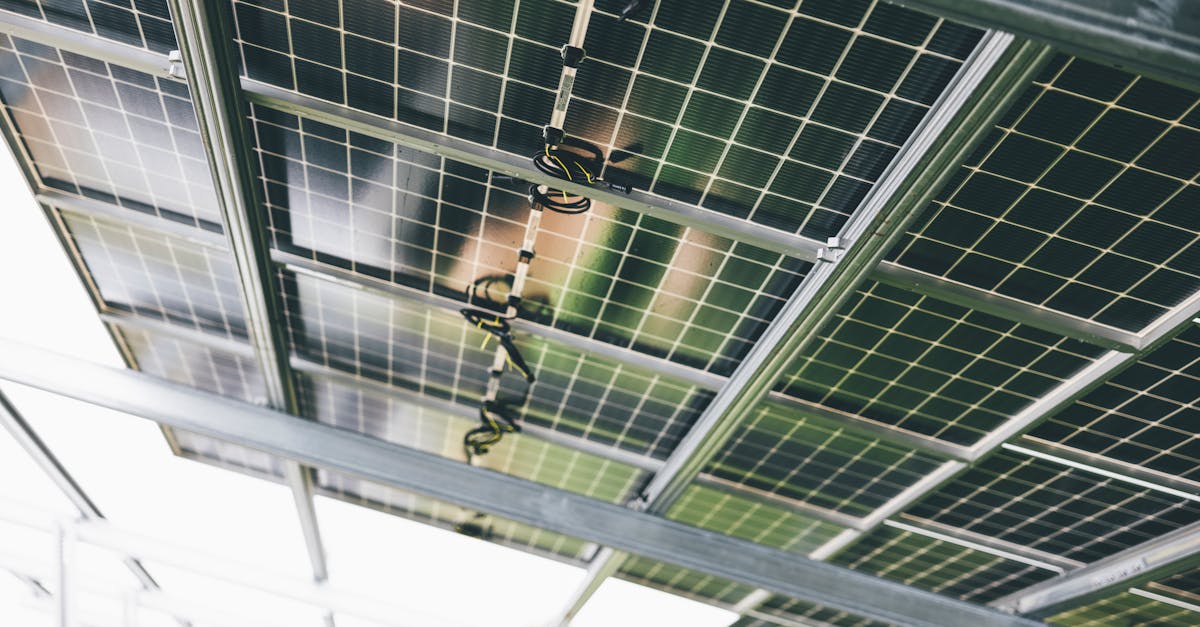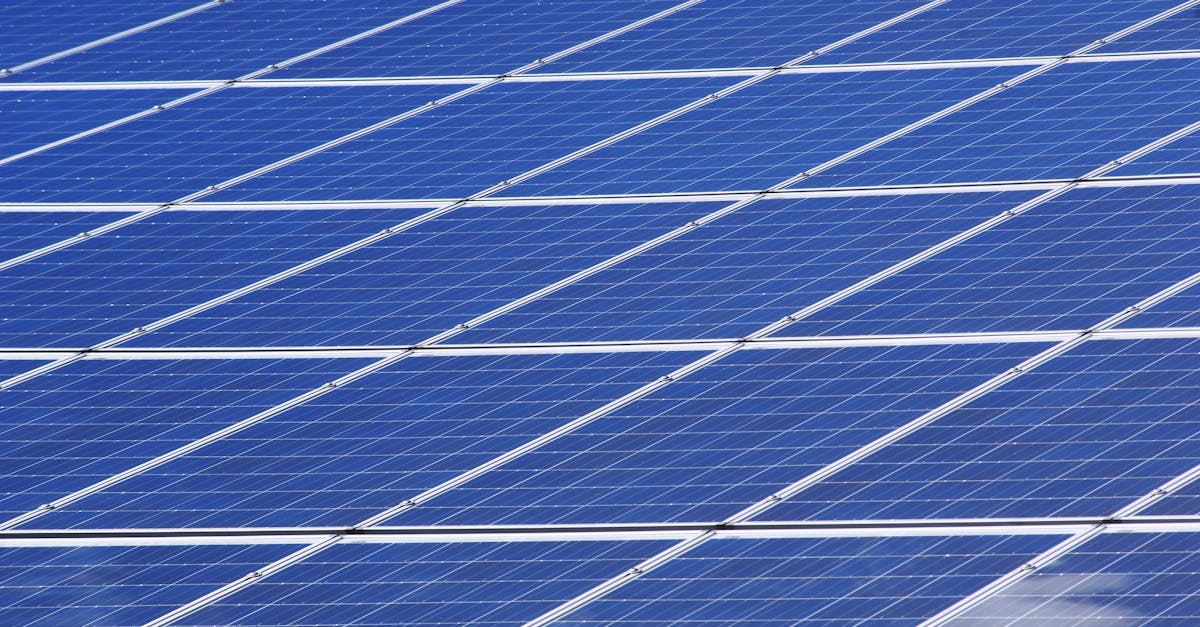Unlocking the Sun’s Potential: Your Journey to Solar-Powered Living

Your Home’s Energy Revolution: Unveiling the Power of Residential Solar
Harness the sun’s boundless energy and empower your home with a residential solar power system. Join the growing movement towards energy independence, environmental stewardship, and financial savings. This comprehensive guide will illuminate your solar journey, from assessing your home’s readiness and understanding solar technology to selecting the optimal system and reaping the rewards of a wise investment. Embark on this transformative experience and create a brighter, more sustainable future for you and our planet.
Thank you for reading this post, don't forget to subscribe!
Unveiling the Potential of Residential Solar Power
Imagine a future where your home becomes a beacon of self-reliance, sustainability, and financial prudence. Residential solar power systems are not just an alternative energy source; they are an investment in the well-being of our planet and the prosperity of our homes. By harnessing the sun’s boundless energy, we can reduce our dependence on fossil fuels, shrink our carbon footprint, and create a cleaner, healthier environment for generations to come.
1. Introducing Residential Solar Power: Empowering You and the Environment
Introducing Residential Solar Power: Empowering You and the Environment
Harness the sun’s boundless energy and embark on a journey towards energy independence, reduced environmental impact, and financial savings. Residential solar power systems are not merely an alternative energy source; they are an investment in the well-being of our planet and the prosperity of our homes. By harnessing the sun’s energy, we can generate our own electricity, decrease our reliance on fossil fuels, and shrink our carbon footprint.
Imagine a future where your home becomes a beacon of sustainability, self-reliance, and financial prudence. Residential solar power systems empower you to take control of your energy consumption and contribute to a cleaner, healthier environment for generations to come. Join the growing movement of homeowners embracing solar power and experience the transformative potential it holds for your home and our planet.
Why Solar Power Matters for Your Home and the Planet
Why Solar Power Matters for Your Home and the Planet
Embark on a journey towards energy independence, environmental stewardship, and financial prudence. Residential solar power systems offer a myriad of compelling benefits that make them an attractive option for homeowners. By harnessing the sun’s boundless energy, we can create a more sustainable future for our planet and our homes.
Environmental Benefits: Solar power is a clean, renewable energy source that does not emit greenhouse gases or other pollutants. By choosing solar, you can significantly reduce your carbon footprint and contribute to the fight against climate change. Solar power systems also promote energy diversity, reducing our reliance on fossil fuels and enhancing our energy security.
Financial Incentives: Installing a residential solar power system can provide significant financial savings in the long run. Many governments and utility companies offer incentives, such as tax credits, rebates, and net metering programs, to encourage the adoption of solar energy. These incentives can大幅减少 the upfront cost of your system and accelerate your return on investment. In many cases, solar power can help you lock in lower electricity rates, protecting you from rising energy costs.
Understanding Solar Energy: Capturing Nature’s Bounty
Understanding Solar Energy: Capturing Nature’s Bounty
Solar energy is a clean, renewable source of energy that harnesses the power of the sun to generate electricity. Solar panels, the heart of a solar power system, are composed of photovoltaic (PV) cells that convert sunlight into direct current (DC) electricity. This DC electricity is then inverted into alternating current (AC) electricity, which is compatible with the electrical grid in your home.
The process of converting sunlight into electricity is known as the photovoltaic effect. When sunlight strikes a PV cell, it knocks electrons loose from atoms, creating an electrical current. The more sunlight that strikes the PV cell, the more electricity it generates. Solar panels are typically made up of multiple PV cells connected together to increase their power output.
Solar power systems are designed to seamlessly integrate with your home’s electrical grid. The electricity generated by the solar panels is fed into your home’s electrical panel, where it can be used to power your appliances, lights, and other devices. Any excess electricity that is not immediately used can be sent back to the grid, potentially earning you credits on your electricity bill.
2. Assessing Your Home’s Solar Readiness

Assessing Your Home’s Solar Readiness
Before installing a residential solar power system, it’s important to assess your home’s suitability and identify any potential factors that may affect system performance. Here are some key considerations:
-
Roof Orientation and Sunlight Exposure: The orientation of your roof and the amount of sunlight it receives throughout the day will impact the efficiency of your solar panels. Ideally, your roof should face south (in the Northern Hemisphere) or north (in the Southern Hemisphere) and have minimal shading from trees or other structures.
-
Roof Condition and Available Space: Your roof should be in good condition and have sufficient space to accommodate the number of solar panels needed to meet your energy needs. Factors such as roof age, slope, and structural integrity should be carefully evaluated.
-
Local Regulations and Permitting: Local building codes and zoning regulations may have specific requirements for the installation of solar panels. It’s essential to check with your local authorities to obtain the necessary permits and ensure compliance with all applicable regulations.
Evaluating Roof Conditions: Ensuring a Solar-Friendly Foundation
Evaluating Roof Conditions: Ensuring a Solar-Friendly Foundation
Before installing solar panels, it’s essential to thoroughly inspect your roof’s condition to ensure it can adequately support the weight and withstand the potential stresses of a solar panel installation. Here are some key factors to consider:
-
Roof Structure and Pitch: The structure of your roof, including its framing and materials, must be strong enough to bear the weight of the solar panels and withstand wind loads. The pitch, or slope, of your roof also plays a role in determining the efficiency of your solar system.
-
Roof Age and Condition: The age and condition of your roof will influence its suitability for solar panels. Older roofs may require repairs or reinforcement to ensure they can safely support the additional weight. It’s important to have your roof inspected by a qualified professional to assess its condition and identify any potential issues.
-
Shading and Sunlight Exposure: Shading from trees, nearby buildings, or other structures can significantly impact the performance of your solar panels. When assessing your roof, carefully consider the amount of sunlight exposure it receives throughout the day and identify any potential sources of shading.
Navigating Local Regulations: Complying with Building Codes
Navigating Local Regulations: Complying with Building Codes
Before installing a solar power system on your home, it’s crucial to familiarize yourself with local building codes and permitting requirements. These regulations are in place to ensure the safety and aesthetic integrity of your property and the surrounding community.
-
Building Codes: Local building codes typically specify requirements for the installation of solar panels, including their placement, electrical wiring, and structural support. These codes are designed to ensure that your solar system is installed safely and meets minimum safety standards.
-
Permitting: Most municipalities require permits for the installation of solar panels. The permitting process involves submitting plans for your proposed system to the local building department for review and approval. This process helps ensure that your system complies with all applicable codes and regulations.
3. Selecting the Right Solar Power System: Tailoring to Your Needs
Selecting the Right Solar Power System: Tailoring to Your Needs
Choosing the right solar power system for your home involves carefully considering your energy needs, budget, and available resources. Here are some key factors to keep in mind:
-
Types of Solar Panels: There are several types of solar panels available, each with its own advantages and disadvantages. Monocrystalline panels are the most efficient and durable, while polycrystalline panels are more affordable. Thin-film panels are lightweight and flexible, making them suitable for certain applications.
-
Inverters: Inverters are essential components of solar power systems, converting the DC electricity generated by solar panels into AC electricity that can be used by your home’s appliances and devices. There are two main types of inverters: string inverters and microinverters. String inverters are more common and typically less expensive, while microinverters offer greater efficiency and flexibility.
-
Monitoring Systems: Solar monitoring systems allow you to track the performance of your solar power system and identify any potential issues. There are various types of monitoring systems available, ranging from simple smartphone apps to advanced web-based platforms.
Navigating Solar Panel Options: Efficiency and Aesthetics
Navigating Solar Panel Options: Efficiency and Aesthetics
When selecting solar panels for your home, you’ll encounter various types, each with its own unique characteristics. Understanding these differences will help you make an informed decision that meets your specific needs and preferences.
-
Monocrystalline Solar Panels: Monocrystalline solar panels are made from a single, pure silicon crystal. They offer the highest efficiency ratings, converting more sunlight into electricity compared to other types of solar panels. Monocrystalline panels are also known for their durability and long lifespan.
-
Polycrystalline Solar Panels: Polycrystalline solar panels are made from multiple silicon crystals. They are less efficient than monocrystalline panels but are also more affordable. Polycrystalline panels have a slightly different appearance, with a more speckled look compared to the uniform black of monocrystalline panels.
Inverters: The Heart of Your Solar System
Inverters: The Heart of Your Solar System
Inverters play a crucial role in solar power systems, converting the DC electricity generated by solar panels into AC electricity that can be used by your home’s appliances and devices. Choosing the right inverter is essential for maximizing the efficiency and performance of your solar system.
-
String Inverters: String inverters are the most common type of inverter used in residential solar systems. They connect multiple solar panels in series, forming a string. The DC electricity generated by the string of panels is then converted to AC electricity by the inverter.
-
Microinverters: Microinverters are another type of inverter that is gaining popularity. Each microinverter is connected to a single solar panel, allowing for greater flexibility and efficiency. Microinverters can also help reduce the impact of shading on your solar system’s performance.
Monitoring Systems: Tracking Your Solar Performance
Monitoring Systems: Tracking Your Solar Performance
Solar monitoring systems allow you to keep track of your solar power system’s performance and identify any potential issues. This information can help you maximize your energy production and ensure that your system is operating at its best.
-
Mobile Apps: Many solar monitoring systems offer mobile apps that allow you to monitor your system’s performance from anywhere. These apps typically provide real-time data on your system’s energy production, as well as historical data that you can use to track your progress over time.
-
Online Dashboards: Online dashboards are another popular option for solar monitoring. These dashboards provide a comprehensive overview of your system’s performance, including detailed graphs and charts that can help you identify trends and patterns. Some online dashboards also allow you to remotely control your system, such as turning it on or off.
4. Professional Installation: Ensuring Safety and Efficiency

Professional Installation: Ensuring Safety and Efficiency
Partnering with experienced solar installers is crucial for ensuring a safe, efficient, and code-compliant solar power system installation. Professional installers have the knowledge and expertise to properly design, install, and maintain your system, giving you peace of mind and maximizing your investment.
-
Installation Process: The solar installation process typically involves several steps, including site assessment, system design, permitting, installation, and inspection. Experienced installers will guide you through each step, ensuring that your system is installed safely and efficiently.
-
Permitting and Inspections: Most municipalities require permits for the installation of solar panels. Professional installers will handle the permitting process and ensure that your system meets all applicable building codes and safety regulations. They will also arrange for the necessary inspections to ensure that your system is installed correctly and meets all safety standards.
Finding Reputable Installers: Experience and Expertise
Finding Reputable Installers: Experience and Expertise
Choosing the right solar installer is crucial for ensuring a successful solar power system installation. Here are some key factors to consider when evaluating potential installers:
-
Experience and Certifications: Look for installers with a proven track record of successful solar installations. Check for industry certifications, such as the North American Board of Certified Energy Practitioners (NABCEP), which demonstrate the installer’s knowledge and expertise.
-
Customer Testimonials: Read online reviews and ask for references from previous customers to get a sense of the installer’s reputation and the quality of their work. Positive feedback from satisfied customers is a good indication of a reliable and trustworthy installer.
Navigating Permits and Inspections: Adhering to Regulations
Navigating Permits and Inspections: Adhering to Regulations
Before installing a solar power system on your home, it’s important to understand the permitting process and inspections required by your local authorities. These regulations are in place to ensure the safety and reliability of your solar system, as well as to maintain the aesthetic integrity of your neighborhood.
-
Building Permits: Most municipalities require a building permit for the installation of a solar power system. The permit application process typically involves submitting plans for your proposed system to the local building department for review and approval. This ensures that your system meets all applicable building codes and safety standards.
-
Electrical Permits: In addition to a building permit, you may also need to obtain an electrical permit from your local utility company. This permit ensures that your solar system is properly connected to the electrical grid and meets all electrical safety standards.
5. Unveiling the Benefits of Residential Solar: A Smart Investment
Unveiling the Benefits of Residential Solar: A Smart Investment
Transitioning to solar power for your home offers a multitude of tangible benefits that can enhance your financial well-being, increase the value of your property, and reduce your environmental impact. Here’s a closer look at these advantages:
-
Cost Savings: Solar power can significantly reduce your monthly electricity bills by offsetting the amount of energy you draw from the grid. Over time, these savings can add up to substantial financial benefits.
-
Increased Property Value: Installing a solar power system can increase the value of your home. Many homebuyers are willing to pay a premium for homes with solar panels, as they recognize the long-term savings and environmental benefits that come with solar power.
Unlocking Energy Independence: Reducing Reliance on the Grid
Unlocking Energy Independence: Reducing Reliance on the Grid
Embracing solar power empowers you to take control of your energy consumption and reduce your dependence on the traditional power grid. With a solar power system, you can generate your own clean, renewable electricity, minimizing your reliance on fossil fuels and enhancing your energy security.
-
Reduced Grid Dependence: Solar panels allow you to generate electricity on-site, reducing the amount of energy you need to draw from the grid. This can lead to significant savings on your electricity bills and provide you with greater energy independence.
-
Power Outage Protection: Solar power systems can provide backup power during grid outages, ensuring that your essential appliances and devices continue to operate. This is particularly valuable in areas prone to power disruptions or natural disasters.
Slashing Electricity Bills: Embracing Savings
Slashing Electricity Bills: Embracing Savings
Transitioning to solar power can significantly reduce your monthly electricity expenses. Solar panels generate clean, renewable energy that offsets the amount of electricity you need to purchase from your utility company. This can lead to substantial savings on your electricity bills over time.
-
Net Metering: Net metering is a billing mechanism that allows solar panel owners to sell the excess electricity they generate back to the grid at a retail rate. This can further reduce your electricity costs and accelerate the payback period of your solar investment.
-
Solar Incentives: Many governments and utility companies offer incentives to encourage the adoption of solar energy. These incentives can include tax credits, rebates, and performance-based payments that can significantly reduce the upfront cost of your solar power system.
Enhancing Property Value: A Sustainable Asset
Enhancing Property Value: A Sustainable Asset
Installing a residential solar power system can increase the value of your home. Solar panels are recognized as a valuable asset by many homebuyers, as they offer long-term savings on energy costs and contribute to a more sustainable lifestyle.
-
Increased Curb Appeal: Solar panels can enhance the curb appeal of your home, making it stand out in the neighborhood. Many people associate solar panels with modern design and environmental consciousness, which can be attractive to potential buyers.
-
Higher Resale Value: Studies have shown that homes with solar panels sell for a higher price than comparable homes without solar. This is because solar panels are seen as a desirable feature that can increase the overall value of your property.
Mitigating Environmental Impact: A Green Choice
Mitigating Environmental Impact: A Green Choice
Embracing solar power is an environmentally conscious decision that can reduce your carbon footprint and contribute to a sustainable future. Solar panels generate clean, renewable energy without producing greenhouse gases or other pollutants.
-
Reduced Carbon Emissions: Solar power displaces the need for electricity generated from fossil fuels, which significantly reduces carbon emissions. By choosing solar, you can help mitigate climate change and protect the environment for future generations.
-
Improved Air Quality: Solar power does not produce air pollution, unlike fossil fuel-based energy sources. This can improve air quality in your community and reduce the risk of respiratory problems.
6. Financing Your Solar Investment: Unlocking Affordability

Financing Your Solar Investment: Unlocking Affordability
Installing a residential solar power system can be a significant investment, but there are several financing options available to make it more affordable. From traditional loans to innovative payment plans, there’s a solution to suit every budget.
-
Solar Loans: Solar loans are specifically designed to finance the purchase and installation of solar power systems. They typically offer competitive interest rates and flexible repayment terms, making them a popular option for homeowners.
-
Solar Leases: Solar leases allow you to lease a solar power system from a solar provider without having to purchase it upfront. This can be a good option if you want to avoid the high upfront costs associated with solar panel installation.
Solar Loans: Traditional Financing
Solar Loans: Traditional Financing
Solar loans are a popular financing option for homeowners who want to install a solar power system. These loans are specifically designed for solar projects and typically offer competitive interest rates and flexible repayment terms.
-
Loan Terms: Solar loan terms typically range from 5 to 25 years, giving you the flexibility to choose a repayment plan that fits your budget. Longer loan terms result in lower monthly payments, but you’ll pay more interest over the life of the loan.
-
Interest Rates: Interest rates on solar loans vary depending on your creditworthiness, the loan term, and the lender. It’s important to compare interest rates from multiple lenders to find the best deal.
Solar Leases: A Zero-Down Option
Solar Leases: A Zero-Down Option
Solar leases offer a unique way to go solar without any upfront costs. With a solar lease, you lease the solar power system from a solar provider and pay a monthly lease payment. At the end of the lease term, you have the option to purchase the system, extend the lease, or simply return it.
-
Lease Terms: Solar lease terms typically range from 10 to 25 years. During this time, you’ll be responsible for the monthly lease payments, while the solar provider handles the maintenance and repairs of the system.
-
Monthly Payments: Monthly lease payments for solar systems vary depending on the size of the system, the lease term, and the solar provider. It’s important to compare lease offers from multiple providers to find the best deal.
Power Purchase Agreements (PPAs): Pay for Solar Electricity
Power Purchase Agreements (PPAs): Pay for Solar Electricity
Power purchase agreements (PPAs) are another option for financing a solar power system. With a PPA, you agree to purchase solar electricity from a solar provider at a fixed rate for a specified period. The solar provider is responsible for the installation, maintenance, and repairs of the system.
-
PPA Terms: PPA terms typically range from 10 to 25 years. During this time, you’ll be obligated to purchase a certain amount of solar electricity from the solar provider at the agreed-upon rate.
-
Electricity Rates: Electricity rates under PPAs are typically lower than traditional retail electricity rates. This can save you money on your monthly electricity bills.
Government Incentives: Reducing Solar Costs
Government Incentives: Reducing Solar Costs
Government incentives can significantly reduce the cost of installing a residential solar power system. These incentives include tax credits, rebates, and performance-based payments.
-
Tax Credits: The federal government offers a 30% tax credit for the installation of solar power systems. This tax credit is available to both homeowners and businesses. To qualify for the tax credit, the solar system must be installed on your primary residence or business property.
-
Rebates: Many states and local governments offer rebates for the installation of solar power systems. These rebates can range from a few hundred dollars to several thousand dollars. To find out if you’re eligible for a rebate, contact your state or local government energy office.
7. Embark on Your Solar Journey: A Transformative Experience
Embark on Your Solar Journey: A Transformative Experience
Join the growing number of homeowners who are embracing the benefits of residential solar power systems. Experience the satisfaction of generating your own clean energy, reducing your environmental impact, and creating a more sustainable future for your family.
-
Generate Your Own Clean Energy: Solar panels convert sunlight into electricity, allowing you to generate your own clean, renewable energy. This can reduce your reliance on fossil fuels and help mitigate climate change.
-
Reduce Your Environmental Impact: Solar power is a clean and sustainable source of energy that does not produce greenhouse gases or other pollutants. By choosing solar, you can help protect the environment for future generations.
Solar Success Stories: Inspiring Examples
Solar Success Stories: Inspiring Examples
Read inspiring stories of homeowners who have successfully transitioned to solar power. Learn from their experiences, challenges, and the transformative impact solar has had on their lives.
-
Reduced Energy Bills and Increased Property Value: Many homeowners report significant savings on their energy bills after installing solar panels. In addition, solar panels can increase the value of your home, making it a smart investment.
-
Energy Independence and Peace of Mind: Homeowners with solar power systems enjoy greater energy independence and peace of mind. They are less reliant on the grid and have backup power in the event of an outage.
Empowering Communities: Solar Co-ops and Shared Benefits
Empowering Communities: Solar Co-ops and Shared Benefits
Join or start a solar co-op to reduce the cost and complexity of going solar. Collaborate with neighbors to leverage group discounts and share the benefits of solar power with your community.
-
Reduced Costs: Solar co-ops allow homeowners to purchase solar panels and installation services at a discounted rate. This is because co-ops negotiate bulk pricing with solar installers.
-
Simplified Process: Solar co-ops handle the process of selecting a solar installer, obtaining permits, and scheduling installation. This can save homeowners a lot of time and hassle.
What is the average cost of a residential solar power system?
The average cost of a residential solar power system varies depending on the size of the system, the type of solar panels used, and the complexity of the installation. However, you can expect to pay between $15,000 and $25,000 for a system that will generate enough electricity to meet the needs of a typical household.
How long does it take to install a residential solar power system?
The installation of a residential solar power system typically takes between one and three days. However, the timeline can vary depending on the size and complexity of the system.
What is the return on investment for a residential solar power system?
The return on investment (ROI) for a residential solar power system depends on a number of factors, including the cost of electricity in your area, the amount of sunlight your home receives, and the size of the system you install. However, you can typically expect to see a ROI of 5-10% per year.
Are there any government incentives for installing a residential solar power system?
Yes, there are a number of government incentives available for installing a residential solar power system. These incentives include tax credits, rebates, and performance-based payments.
How do I choose a solar installer?
When choosing a solar installer, it is important to consider the following factors: experience, reputation, warranties, and price. You should also get multiple quotes from different installers before making a decision.
Quiz: Test Your Solar Knowledge
-
True or False: Solar panels convert sunlight into electricity.
-
Which of the following is NOT a benefit of installing a solar power system?
(a) Reduced energy bills
(b) Increased property value
(c) Reduced carbon footprint
(d) Free electricity for life
-
What is the average cost of a residential solar power system?
(a) $5,000-$10,000
(b) $15,000-$25,000
(c) $25,000-$35,000
(d) $35,000-$45,000
-
What is the return on investment (ROI) for a residential solar power system?
(a) 2-5%
(b) 5-10%
(c) 10-15%
(d) 15-20%
-
How long does it take to install a residential solar power system?
(a) One day
(b) One to three days
(c) One week
(d) Two weeks or more
Answer Key:
- True
- (d) Free electricity for life
- (b) $15,000-$25,000
- (b) 5-10%
- (b) One to three days




